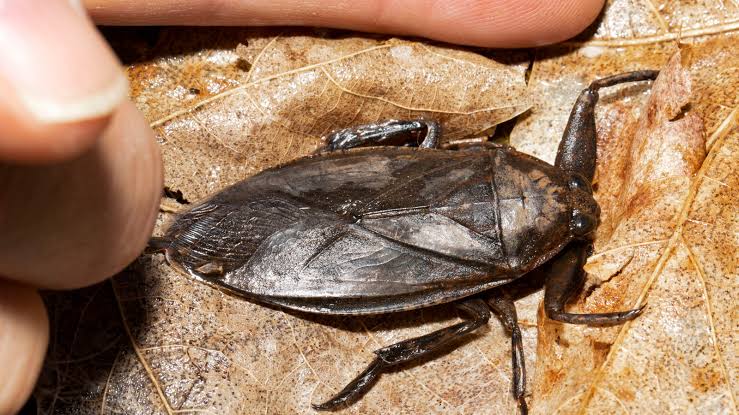cross-posted from: https://lemmygrad.ml/post/5029403
Lethocerus americanus, sometimes called the electric light bug, toe biter or fish killer, is a giant water bug in the family Belostomatidae, native to southern Canada and the United States (north of 35°N; other Lethocerus species are found southwards). It typically has a length around 5–6 cm (2.0–2.4 in). It was originally classified as a species in genus Belostoma. This flattened oval-shaped, brownish insect can get up to 6 cm long. Its front legs are well-developed and adapted to grasping prey, while its flattened back legs are used for swimming.
As its name implies, the giant water bug is found in and around aquatic habitats such as ponds, creeks and streams, marshes, and lake edges. It is a strong flier, and is attracted to lights at night. Giant water bugs are common and found throughout most of North America. They are active from spring to fall, and adults overwinter in mud in aquatic habitats.
This insect is a predator, as indicated by its other common common names, 'toe biter' and 'fish killer'. It eats other aquatic invertebrates, small fish, and amphibians — such as this Pacific chorus frog. Like other members of Family Belostomatidae, the giant water bug may bite humans when disturbed. Bites can be very painful and may even cause permanent damage: upon biting prey the insect injects digestive enzymes to liquefy tissue that can then be sucked out. On humans this can produce a painful lesion.
Lethocerus americanus lays their eggs above water on vegetation, where the male guards it from females that would eat the eggs so the male will bear her offspring instead. Some other giant water bug species lay their eggs on the backs of males. The male then carries the eggs around until they hatch. Adults live about one year.



